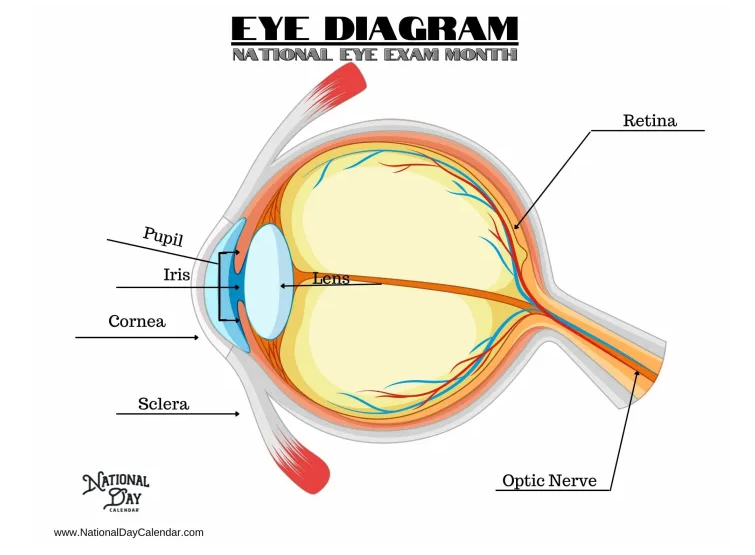
National Eye Exam Month in August brings an offers an entire month for people to schedule their annual eye exam. This monthly observance is also a time to remind people about the importance of taking care of our eye health.
#NationalVisionExamMonth
For many of us, July marks the halfway point of summer vacation and soon preparations for returning to school will begin. Getting a vision exam is a part of that process. Healthy vision is key to a great start to school!
Deteriorating vision can be an early indicator of other health issues. According to the CDC, about 11 million people over the age of 12 need vision correction in the U.S. Getting vision exams on a regular schedule helps doctors to identify issues in their early stages. yearly eye exams is a part of taking care of our overall health.
3 Common Eye Diseases
- Cataracts cause a clouding on the lens of the eye, resulting in vision loss if not treated.
- Diabetic retinopathy is the leading cost of blindness caused by damaged blood vessels in the back of the eye. When caught early, diabetic retinopathy is treatable.
- Glaucoma occurs when the optic nerve in the eye becomes damaged. Unfortunately, glaucoma is not curable.
Now this week in the classroom, we will learn a little about anatomy. Look at the diagram of an eye up above. After studying the chart, see if you can label it using the blank chart in this week’s projects.
Download and print this week’s projects. We offer two this week and some suggestions for other ways to celebrate. You can also follow the suggestions below to help your students explore the days in their own way. It might surprise you what they discover! We’re often surprised by our own discoveries!
Celebrate Every Day in the Classroom by:
1. Asking a question about the day or observance and finding the answer.
2. Exploring the subject further. Whether you read a book, interview an expert, watch a documentary, or run an experiment, there is always more to learn about the observance.
3. Writing about the day or observance. You can write about what you learned or what the day means to you.
4. Telling someone about the day. You might be sharing information that is helpful to someone. Or, you might brighten someone’s day.
5. Solving a problem. Many observances discuss issues around the world that need fixing. How would you fix it?
6. Being creative. Draw, paint, build, design, bake, create your idea of what the observance means.
THIS WEEK’S PROJECTS
Check out this week’s projects. We include a Celebration Challenge, blank diagram of the eye, a color page, word search and several other ways to celebrate in the classroom.
- Celebration Challenge
- Eye Diagram
- Eye Diagram Key
- Coloring Page
- Word Search
- Draw an eye. You can use color pencils, pencils, ink, color crayons, markers or any media you choose.
- Design your own eyeglasses. Create something that represents your personality.
- Take an eye color poll. Determine all the different eye colors in your classroom.